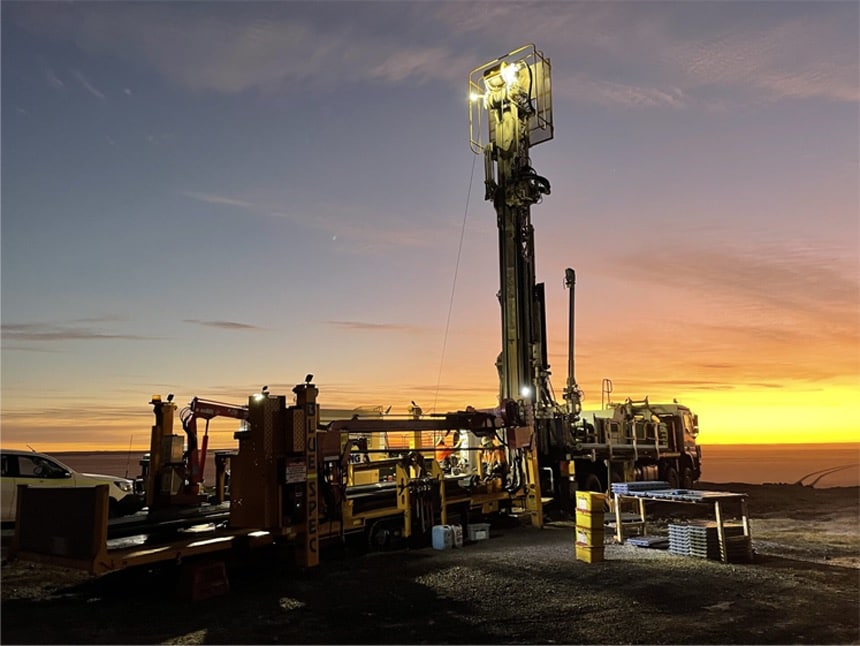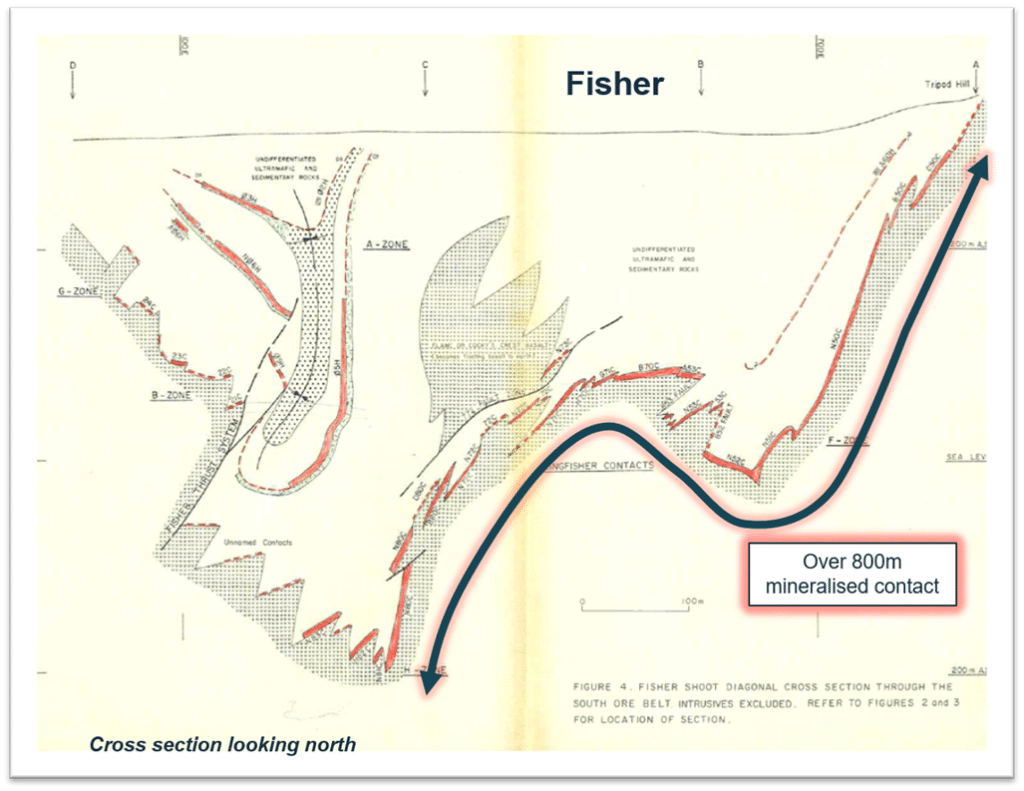

Fisher Nickel Mine
History of Fisher
The Fisher deposit was discovered by WMC Resources Ltd in 1966 with diamond drill (DD) hole KD4, just after the famous Kambalda discovery hole (KD1) at Lunnon Shoot (Silver Lake mine). A decline commenced in February 1971 and first production occurred in October of the same year . A total of 1.65Mt at 2.31% Ni was produced and delivered to the nearby Kambalda Concentrator containing 38,070t of nickel metal. The mine ceased production in 1988 and was sold along with Foster, Silver Lake and Jan nickel mines as part of the divestment of WMC’s gold operations at Kambalda (St Ives Gold Mine) to Gold Fields Ltd in December 2001.
HISTORY OF FISHER – THE SECOND MINE DISCOVERED
The Fisher deposit was discovered by WMC Resources Ltd in 1966 with diamond drill (DD) hole KD4, just after the famous Kambalda discovery hole (KD1) at Lunnon Shoot (Silver Lake mine). A decline commenced in February 1971 and first production occurred in October of the same year . A total of 1.65Mt at 2.31% Ni was produced and delivered to the nearby Kambalda Concentrator containing 38,070t of nickel metal. The mine ceased production in 1988 and was sold along with Foster, Silver Lake and Jan nickel mines as part of the divestment of WMC’s gold operations at Kambalda (St Ives Gold Mine) to Gold Fields Ltd in December 2001.

Fisher closed with significant nickel mineralisation potential left poorly defined or not closed off. The mine sits along strike to the south from the Ken/Coronet nickel mine previously operated by Mincor Resources NL (now owned by Wyloo Metals) and along strike to the north-northwest of the Hunt and Beta nickel deposits, currently being operated by TSX listed Karora Resources.
Some 2.5km strike corridor of potential channel environment, to the south side of the mine, can be categorised as either under-explored or having received no modern exploration focus for at least 20 years, and up to 35 years in some cases.
The Company’s work program at Fisher has focused on applying its Historical Core Program to access, re-log, re-cut and then re-assay some of the 260km of historical WMC diamond core drilled in Silver Lake-Fisher project area during the 1960s, 1970s and 1980s. Areas of remnant nickel sulphide mineralisation remained at the time of mine closure and form the basis of the initial ranking and high priority work by Lunnon Metals to define and report Mineral Resources in compliance the modern JORC (2012) Code.
On 15 January 2024, the Company reported a first-time MRE for the F Zone at Fisher totaling 252,000 tonnes at 1.9% nickel (Ni) for 4,700 contained nickel tonnes, comprising:
- 56,000 tonnes @ 2.7% Ni for 1,500 nickel tonnes in Indicated Resource; and
- 196,000 tonnes @ 1.6% Ni for 3,200 nickel tonnes in Inferred Resource.
